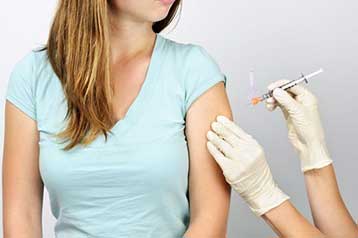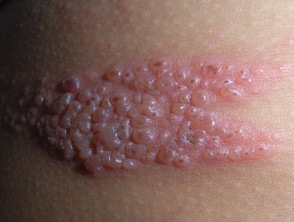E. coli O157:H7 Outbreak from Bagged Spinach Update on Multi-State Outbreak of E. coli O157:H7 Infections From Bagged Spinach, September 15, 2006
State health officials and CDC have identified a widespread outbreak of E. coli O157:H7 infections due to bagged spinach in the United States. The Food and Drug Administration (FDA) issued a press release on September 14 advising consumers not to eat bagged spinach. FDA and industry are collaborating to remove produce that may be contaminated from the market.
As of September 15, 94 persons infected with the outbreak strain have been reported to CDC from 20 states. E. coli O157 causes a diarrheal illness. Among the ill persons, 29 (31%) were hospitalized, 14 (15%) developed a type of kidney failure called hemolytic-uremic syndrome (HUS), and an adult in Wisconsin died.
Identification of the outbreak
E. coli O157 strains from all states are “fingerprinted” at public health laboratories, as part of PulseNet (the network of public health laboratories that sub-type bacteria). The outbreak was first recognized in Wisconsin when health officials received information about an unusually high number of persons with recent E. coli O157 infection. Around the same time, other members of OutbreakNet (the network of public health epidemiologists who investigate foodborne disease outbreaks) were noticing smaller clusters of E. coli O157 infections with the outbreak pattern. OutbreakNet identified a multi-state outbreak on September 13, and implicated bagged spinach the next day.
The first reported illness associated with the outbreak began on August 5, the most recently reported case had onset of illness on September 5.
The states that have reported cases are WI (29), UT (11), NY (7), OH (7), MI (6), NM (5), OR (5), IN (4), ID (3), KY (3), PA (3), CT (2), ME (2), CA (1), MN (1), NV (1), TN (1), VA (1), WA (1), and WY (1).
Spinach is the source
The data indicate that bagged spinach is the source. Vegetables, including green leafy ones such as spinach, are an important part of a healthy diet. The produce industry already takes many precautions. However, fresh produce can be contaminated in the field or during processing. If it can be determined how contamination occurred, additional measures can be designed to prevent future illnesses.
Continuing investigation
State health officials are working to identify all outbreak cases, and to determine the exact type(s) and brand(s) of spinach they consumed. CDC is coordinating the multi-state aspects of the investigation. FDA and industry are collaborating with state health officials and CDC to quickly gather information and take actions to protect the public.
Advice for consumers about this outbreak
The following is advice for consumers about this outbreak:
FDA has advised consumers not to eat bagged spinach at this time. |
| Persons who develop a diarrheal illness and who ate bagged spinach in the previous week should contact their health-care provider and have a stool specimen tested for E. coli O157. |
| Persons who ate bagged spinach and feel well do not need to see a health-care provider |
General information about E. coli O157 infection
E. coli O157 bacteria cause diarrhea that is often bloody. The diarrhea is often accompanied by abdominal cramps, but fever is absent or mild. Illness typically resolves within a week. However, some people, especially children under 5 years old and the elderly, develop a type of kidney failure called hemolytic-uremic syndrome (HUS). Among children with HUS, 5% die.
General information about timing of reporting
After a person ingests contaminated food, 3-4 days typically pass before illness begins. Then a few days often pass before the person seeks medical care and submits a stool specimen. The laboratory spends a few days culturing the stool and identifying the causative agent as E. coli O157. The laboratory then sends the strains to the state public health laboratory. This laboratory spends a few days sub-typing the E. coli O157 according to the PulseNet subtyping protocol. They then download the “fingerprint” pattern into a CDC database. Laboratorians and epidemiologists in states and at CDC review this information daily to detect clusters of similar strains that could represent outbreaks due to a common source. The epidemiologists then call the ill persons to ask about their recent exposures. If everything goes quickly, a person could be interviewed within 2 weeks after eating a contaminated food, but delays can occur at any point.
In addition, in most outbreaks, the number of reported ill persons is usually the “tip of the iceberg.” Other persons have probably developed illness due to this same strain, but did not have a culture to confirm the cause, either because a stool specimen was not tested, or the clinical laboratory did not perform the specific test for E. coli O157.
General advice for consumers about E. coli O157 in produce
The following is advice for consumers about protecting themselves from infection with E. coli O157 in produce:
E. coli O157 is highly susceptible to heat. For example, E. coli strains in water are killed after 1 minute of boiling. Cooking vegetables well will kill E. coli. Ideally, food that will be consumed without cooking should be safe to eat. However, bacteria stick to produce even when it is washed, and sometimes the bacteria are inside the produce. These are some things consumers can do to protect themselves from bacteria in produce consumed without cooking:
|
|
Anuncios |
|
|
|
Supermarkets and restaurants can require their suppliers to provide proof that produce is handled using the best hygienic practices all the way from the farm to the table.
Source
centers for Disease Control and Prevention
http://www.cdc.gov/
More Information...






